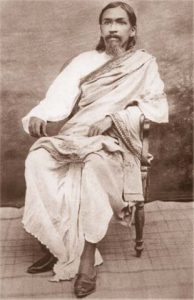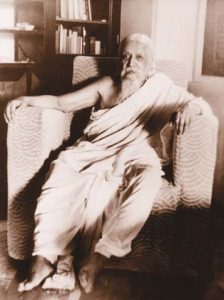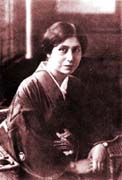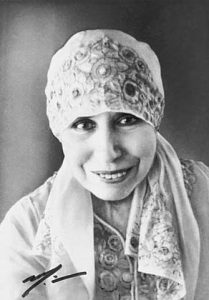Raised in India for the first ten years of my life, I heard about yoga that spiritual masters do. In the US, I attended yoga classes in the pre- pandemic era for centering and grounding myself. I love the restorative yoga postures. I discovered yoga in my 40s. I have often entered yoga classes feeling unsettled with the demands of juggling many aspects of a busy life. I have always left yoga classes with a certain level of serenity and a feeling that “everything will be Ok”. In my fifties, I realize that there is an entire body of research on yoga for health benefits, as well as, spiritual attainment. According to Yogapedia ‘s post on Yoga sutras (October 2020), Patanjali, the ancient Hindu sage, wrote about yoga in 196 sutras (threads) , known as the “Yoga sutras”. Patanjali wrote that goal of yoga is union. Union can mean many things. Union of physical, mental and spiritual states. For me, this mean awareness of my breath and the current moment, NOW. It is a reminder that all I need to do right now is breathe. I love a saying I heard (cannot place the source right now) which states that all the breaths of the past are completed and one cannot complete the breaths of the future. The future is unknown. One can only breath in the now.
Yoga can mean union of the human consciousness with Universal Consciousness or Divine Source. Union may mean liberation from suffering. Union can also mean attaining higher states of consciousness and conquering the ego. In the Gita, there are 4 forms of yoga for God realization (Union with Divine Consciousness) . Bhakti yoga is one type of yoga, typically known as yoga of love and devotion. Dr. Pandey additionally discussed Sri Aurobindo’s integral yoga, best defined as “All Life is yoga”. My understanding of integral yoga is that not to separate our spiritual practices as confined to finite points in time, such as when we pray or meditate, but that how we live our daily lives is a manifestation of yoga and Divine Love. This is a very challenging practice, which I will discuss later.
I feel very honored to interview Dr. Alok Pandey on bhakti yoga and integral yoga. I am very grateful to Dr. Pandey for sharing his wisdom and insights about bhakti yoga. Also my gratitude to Mr. Vivek Nagar for helping set up the technology for interview. I am not the most proficient person technologically. Thank God that the interview finally happened. This post includes introduction of Dr. Pandey, the video interview with Dr. Pandey, and introduction of Sri Aurobindo and Mother. Discussion consists of themes in bhakti yoga and integral yoga.
DR. ALOK PANDEY
I found Dr. Pandey to be very kind, patient especially with the technological difficulties that were happening. He is extremely accomplished, knowledgeable, voracious readers of ancient Hindu sacred scriptures and generous in sharing his knowledge. He is a man of science and faith. He describes himself as a “psychiatrist by profession and philosopher by temperament”. He discussed serving in the Indian Air Force and then taking premature retirement to serve in the ashram of Sri Aurobindo and Mother in Pondicherry, India. He stated that while confronting death, disease and suffering, he found perfect answers at the “feet of Sri Aurobindo and Mother”. He discussed practicing integral yoga developed by Sri Aurobindo. He provides health care services through Integral Health Center of the Sri Aurobindo Society. Dr. Pandey is the co-editor of the quarterly health journal, New Approaches to Medicine and Health, published by Sri Aurobindo Institute of Integral Health and Research. He is editor of monthly All India Magazine (AIM) published by Sri Aurobindo Society. He has also written three books, “Death, Dying and Beyond”, “Patient at the Crossroads” and “Veda of the Body”. He has facilitated symposiums on yoga, psychology, health and education in India and internationally.
Due to my technological ineptitude, I started recording after 20 minutes of the interview with Dr. Pandey. Therefore, I will discuss some of the points that Dr. Pandey made before my recording started. I have posted a link to his interview later in the post. Dr. Pandey talked about the critical point that Creation is not an accident. It is a progressive manifestation of the Divine. The outer process of this manifestation is called evolution of forms. Its inner core is evolution of consciousness. Humanity has a key role to play in this manifestation of divinity through creation. But we are unconscious at times of our Divine origin, engulfed in darkness, suffering, limitations and death. He added that our encounters with suffering, pain, shadow parts (parts that we are not proud of) and healing of the shadow through love and light is also part of the spiritual journey. He stated that our spiritual evolution will lead us to realize that we are part of the Divine Source and eventual God realization. Dr. Pandey discussed that when we are unconscious of our Divine nature, we are in egoic mode, where “I” becomes central. The notion of the ego or (I) is in direct contrast to the Divine. The ego is finite, self absorbed and thinks it is in control of everything. In contrast, The Divine Source is Infinite, Vast, and Incomprehensible to the human mind. Dr. Pandey relayed Sri Aurobindo’s words that human beings in ego mode are like “petty adventurers in an Infinite Universe”. I am no stranger to the ego and have been a “petty adventurer” many times in my life.
Dr. Pandey talked about bhakti yoga (path of devotion and love through the heart) which is one of the swiftest ways to reach God realization and experience Agape Love. Dr. Pandey described that avators ( incarnations of God) in different human forms through out the ages, such as, Christ, Krishna, Buddha (incarnation of Divine Aspect of Compassion), Sri Aurobindo and the Mother, serve as human representatives of the Divine to lead our humanity by their divine examples. The other point that he makes is that when we are connected to the Divine Source, or God, we experience unconditional love and we are capable of giving unconditional love to others and manifest the truth and beauty of love in our daily lives.
I also love Dr. Pandey’s discussion that the spiritual path of God realization is different for every human being: “there are as many spiritual paths as different individuals”. He articulates that we are searching the Divine Source from which we came and the Divine Spark we carry with us. I also asked him that one of the struggles many people, including myself, is that when in deeply painful times, we forget that The Divine Source Walks with us. Dr. Pandey stated that remembering this is part of the path. But to truly remember Him during our pain, we must remember Him at all times. That is the secret.
SRI AUROBINDO AND THE MOTHER
SRI AUROBINDO (pictures from Dr. Pandey)


MOTHER (pictures from Dr.Pandey)


I learned about Sri Aurobindo (born as Aurobindo Ghosh) and Mother of Pondicherry from my late father- in -law (Subrata Ray) who was a lifelong devotee of them. I had the honor and blessing to visit the Sri Aurobindo and the Mother’s ashram in Pondicherry, India in 2001. The ashram is a serene. peaceful and beautiful place close to the Bay of Bengal. The cool winds of the ocean sweep through the ashram grounds. Interestingly Pondicherry was previously a French colony in India.
Sri Aurobindo was an Indian poet, yogi, nationalist against British rule , rishi (seer) and writer. He studied in King’s College, Cambridge, England. Historians have described him as knowing 12 different languages. Interestingly, in early life, Aurobindo defined himself as an atheist and later as an agnostic. However, upon returning to India, he became involved in politics against British rule of India. Sri Aurobindo was imprisoned due to his involvement in nationalist movement to free India from British rule. Sri Aurobindo wrote that during his time in jail, he experienced a profound spiritual realization that followed upon a number of spiritual experiences that he has had earlier. He eventually moved to Pondicherry India. He developed Integral Yoga with the aim of manifesting Divine Life here on earth. He, then, met his spiritual collaborator, Mirra Alfassa, a French national, who moved to Pondicherry. Mirra Alfassa was born in Paris and studied art. She was an accomplished painter. When Mirra Alfassa, at the age of 36, met Sri Aurobindo in Pondicherry in 1914, she immediately recognized him as her guru who guided her spiritual growth. She traveled back to France due to World War One and then lived in Japan for sometime. Then she returned back to Pondicherry and collaborated with Sri Aurobindo in spiritual work. She became known as The Mother. In 1926, Sri Aurobindo entrusted The Mother the charge of taking care of the ashram. Mother was highly involved in developing the Sri Aurobindo Ashram in Pondicherry into a multifaceted and active community.
Dr. Pandey discussed that yoga means practices seeking union with the Divine and that bhakti yoga is one such path. Sri Aurobindo’s yoga being integral, bhakti is also an integral part of it. Surrender and faith being central to the Integral yoga we may say that it is even the core of the Integral Yoga. Sri Aurobindo beautifully describes that with worship and prayer and a manifold relation with the Divine, by a turning of our emotions towards the Divine, we can arrive at the union and our human bodies become temples of the Divine. He contrasts Divine love with human love. Divine Love is something “deep”,” vast” and “silent” and we have to become quiet to sense it and respond to it. Sri Aurobindo writes:
Bhakti and love are not quite the same thing, but love is one of the elements of bhakti. There are different kinds of bhakti and that which is of the nature of love is the strongest and is considered the highest, most intense and ecstatic of all. Also in love itself that form of it which is made of self-giving; surrender, absolute adoration, urge towards a selfless union is the true kind of bhakti that is love
Pg 356, Vol 29, CWSA
The Mother writes the following about love:
“For instance, love between human beings, in all its forms, the love of parents for children, of children for parents, of brothers and sisters, of friends and lovers, is all tainted with ignorance, selfishness and all the other defects which are man’s ordinary drawbacks; so instead of completely ceasing to love — which, besides, is very difficult as Sri Aurobindo says, which would simply dry up the heart and serve no end — one must learn how to love better: to love with devotion, with self-giving, self-abnegation, and to struggle, not against love itself, but against its distorted forms: against all forms of monopolising, of attachment, possessiveness, jealousy, and all the feelings which accompany these main movements. Not to want to possess, to dominate; and not to want to impose one’s will, one’s whims, one’s desires; not to want to take, to receive, but to give; not to insist on the other’s response, but be content with one’s own love; not to seek one’s personal interest and joy and the fulfilment of one’s personal desire, but to be satisfied with the giving of one’s love and affection; and not to ask for any response. Simply to be happy to love, nothing more. If you do that, you have taken a great stride forward and can, through this attitude, gradually advance farther in the feeling itself, and realise one day that love is not something personal, that love is a universal divine feeling which manifests through you more or less finely, but which in its essence is something divine.”
19 Sep 1956, Pg 301, Vol 08, CWM
Mother wrote a beautiful piece on Divine Grace as Everywhere and Infinite. One of the points of Mother I loved learning about is that bigger the trouble, bigger the Grace. I remember hearing that when we are in good times, we do not notice the Grace. But we notice it more in tough times. Mother, a saint, had great spiritual faith and strength to completely trust in Divine Grace. She talked about how people react with confusion and despair when experiencing difficult circumstances. However, according to Mother, when we look back at our past, we realize that exact circumstances (difficult thought it may have been) were needed to get us to a another point in our lives.
Another point that Mother makes is that people can develop spiritually everywhere, not just in secluded ashrams and monasteries. I love the everyday spirituality and seeking the Divine in regular life as beautiful and strong. Divine Grace can spring up everywhere, even in least expected places.
CONCLUDING THOUGHTS
Bhakti yoga is a beautiful path. It is so much easier to practice bhakti yoga with people we love. Loving difficult people, who are major sources of stress, is a tough one. I admit I am a beginner in the spiritual path. One strategy I learned is loving difficult people, who have repeatedly hurt me, is to love and wish them well from a distance. Wishing them happiness and joy, like I would also wish for myself. But from a distance. Remember, I am not a yoga master, but, a beginner.
The idea of integral yoga is very powerful: practicing yogic practices and manifestation of Divine in everyday interactions in our lives. Responding with kindness to people who are saying mean or offensive stuff. Persevering through difficult and challenging times with loving-kindness in your heart for self and others. Patience when we are interacting with someone who is irritated and rude. Loving-kindness in the middle of affliction. This is tough and challenging. Yet Sri Aurobindo’s path of integral yoga challenges us with the idea that spiritual practices, such as love and devotion, are not just for confined times or spaces of worship of the Divine or Higher Power, but, to be practiced in our daily lives, peaks and valleys. According to Sri Aurobindo, one’s entire life is a practice of yoga. For me, this includes loving intentions and presence with family, friends, work, walks, watering plants, washing dishes, stuck in heavy traffic, rough days, challenging interactions, and cooking a meal. As I write this post, I realize I have so much to learn.




